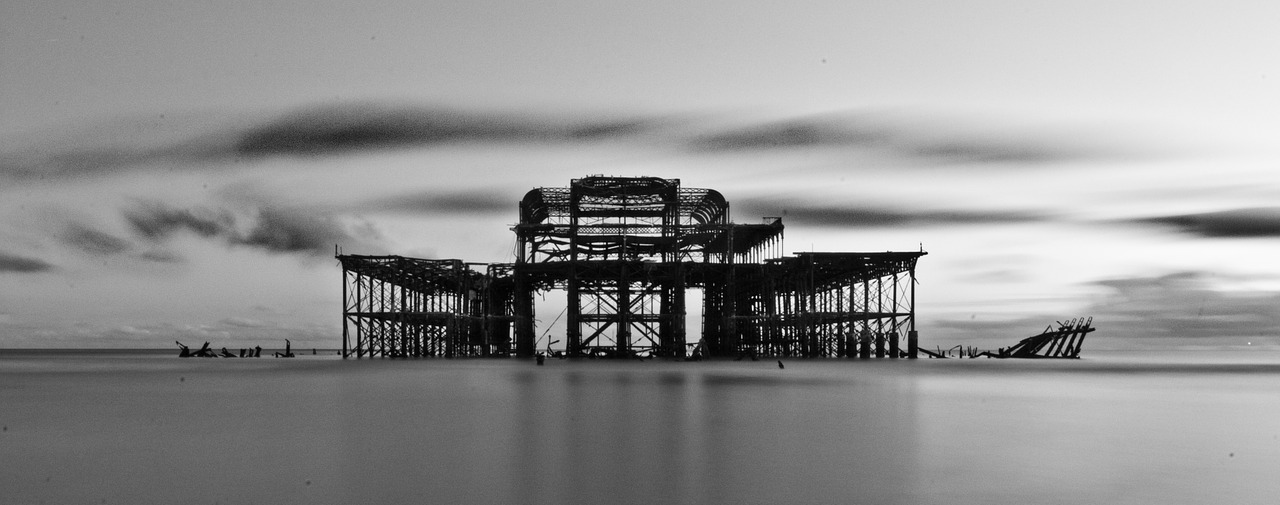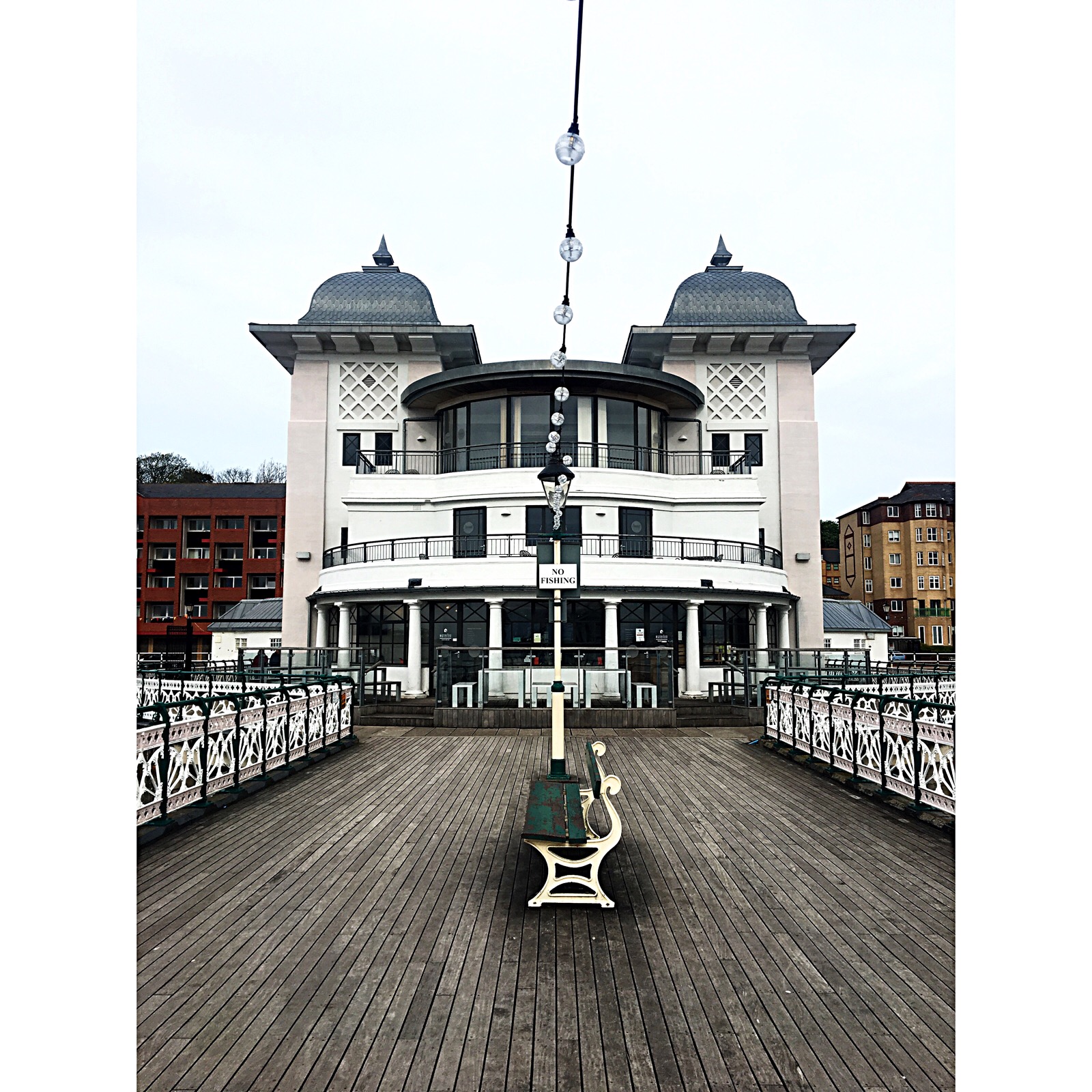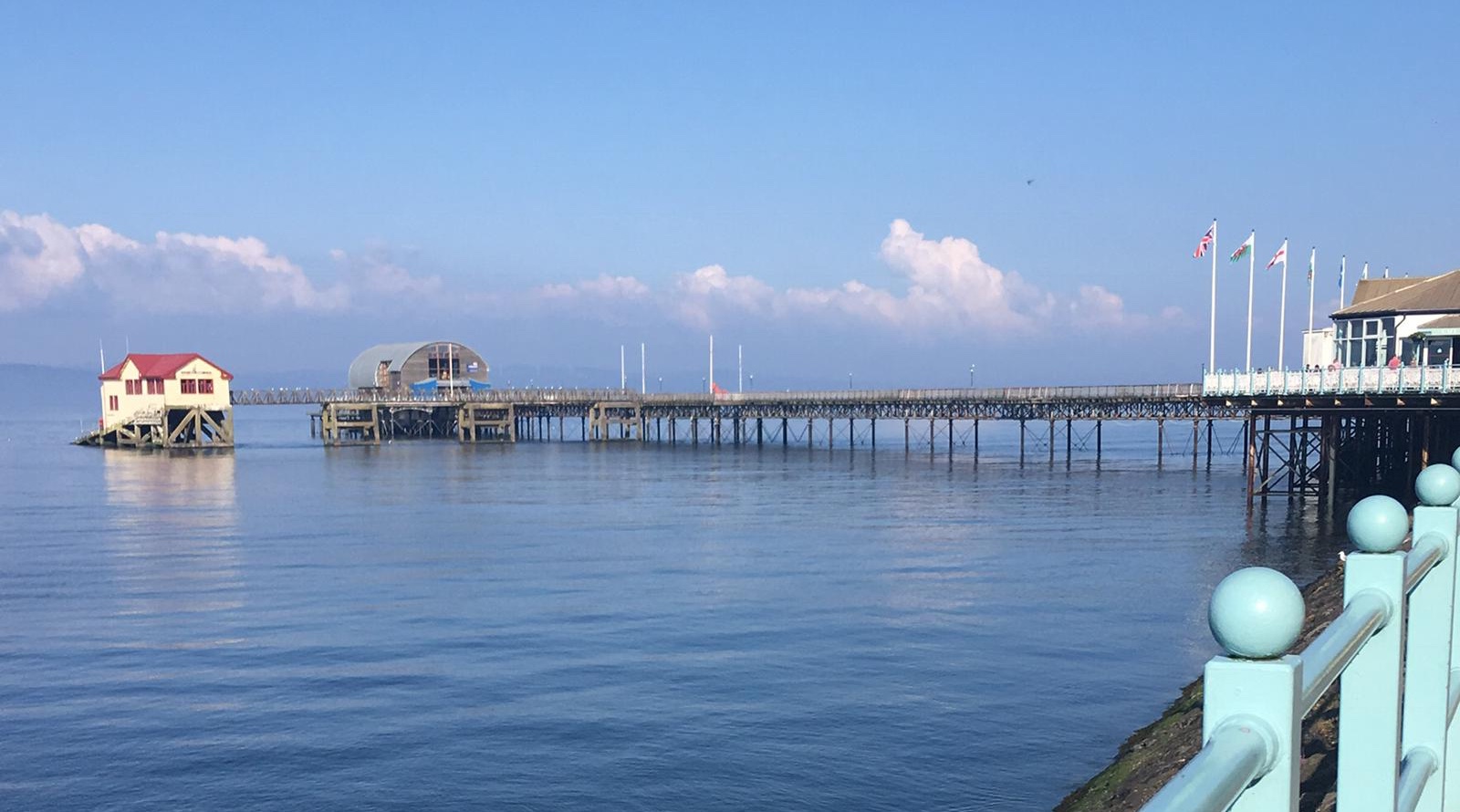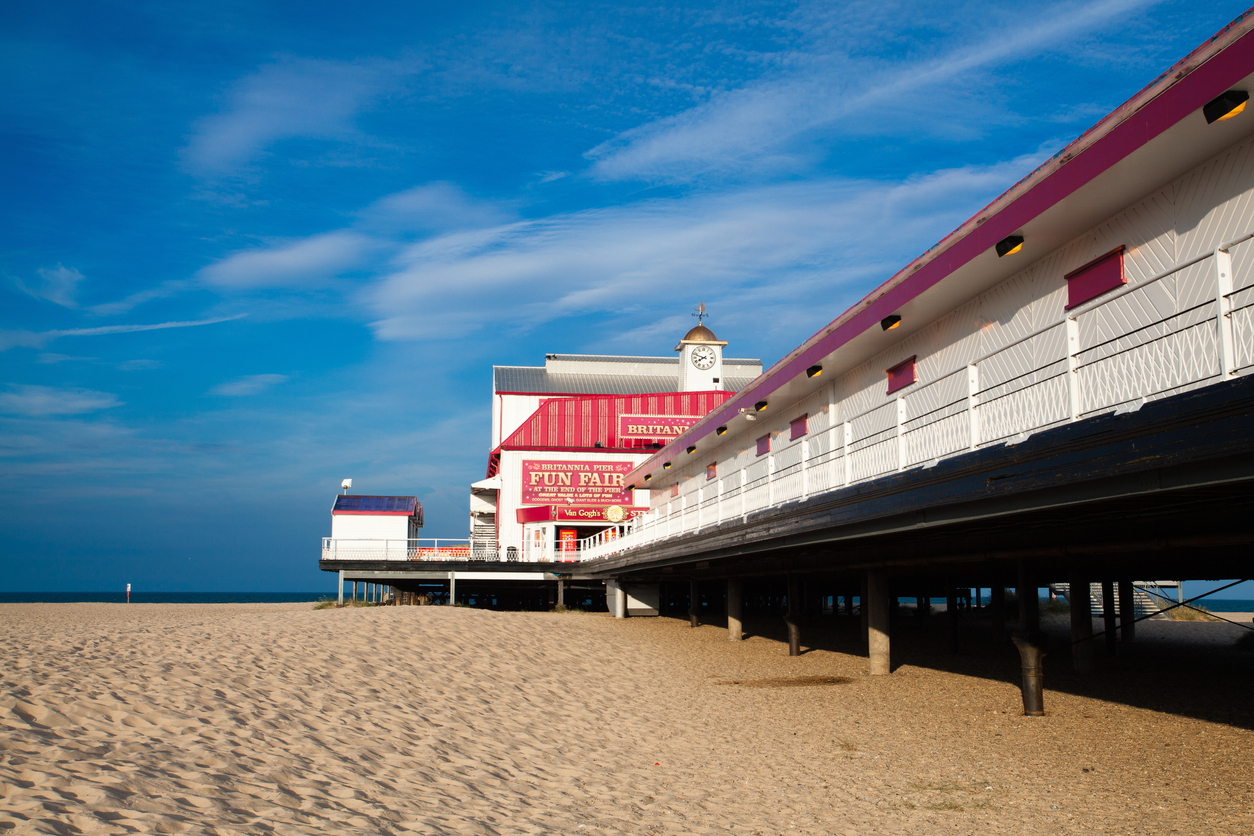Why We Love Seaside Piers and Pavilions!
Now that summer has properly arrived, we expect a lot of you will be going “down the caravan”? In fact, it often seems that the whole of Aberdare decamps to the Welsh coast most summer weekends. And why not? We are blessed with the most amazing beaches and coastline and it is little wonder that the communities of the Welsh Valleys have always made the most of their proximity to the sea.
In this blog, we are exploring the wonderful architecture of the seaside and more especially our favourite pleasure piers and pavilions. The pier is a peculiarly British institution and something of a fascination for us.
First a bit of history….
Seaside holidays first became popular in the late eighteenth and early nineteenth centuries and the idea of pleasure piers originated from the necessity of finding a way to transfer increasing numbers of visitors from the new steam passenger vessels to shore, especially at low tide. Landing charges for passengers and goods meant that piers were becoming increasingly profitable and soon piers became more than just functional.
With the expansion of the railway network in the 1840s and 50s more people than ever were visiting the seaside and there was a rapid expansion of pier building. With the addition of a tollhouse or turnstile, many piers now charged a small fee for promenading, and the facilities and architecture of the piers became more and more elaborate. Ornate ironwork and exuberant pavilions, often in an oriental style, appeared from the 1860s onwards and became archetypal of the Victorian and Edwardian seaside experience.
However, by their very nature piers are constantly battered by the elements, and over the years have proved to be very vulnerable to fires, ship strike and storm damage. The Second World War was also particularly harsh on piers on the south and east coasts of England. Their complex, engineered structures require continual maintenance and costly repair, and many have fallen victim to lack of funds.
Of the 101 piers that were built by 1939, only 55 remain. Here’s a small selection of some of our personal favourites from around the UK:
Penarth Pier, Cardiff
Starting close to home, Penarth Pier really encapsulates the chequered history of British piers from their golden age, through their decline and under-appreciation in the 20th Century, to recent rebirth and restoration.
The pier was built in 1894-5, with a wooden pavilion added to the seaward end in 1907. The magnificent Art Deco shore-end pavilion was built in 1927-8.
Penarth Pier has had a challenging history of fires and boat crashes. It has also had many incarnations over the years including being used as a dance hall, snooker hall, gymnasium and even a multi storey car park. But, in 2013, the £4.2m restoration of Penarth Pier Pavilion was competed and it is now a wonderful community space hosting cinema screenings, concerts, exhibitions, workshops and tea rooms.
Mumbles Pier, Swansea
Another iconic Welsh landmark is Mumbles Pier in Swansea, opened in 1898 as the terminus of the Swansea and Mumbles Railway. The pier is relatively simple in its design and has never had an ornate pavilion.
The special thing about Mumbles Pier is its long association with the RNLI. A walkway to the lifeboat slipway was added to the north side of the pier in 1916 and the original boathouse was built in 1922. A brand-new boathouse (needed to accommodate the modern class of lifeboats) was built on the seaward end of the pier in 2014. This functional purpose formed an important part of the very recent restoration and regeneration of the pier and will hopefully secure its long-term future.
Britannia Pier, Great Yarmouth
Childhood memories of seaside holidays in the 1970s and 1980s are the reason for this next choice. Great Yarmouth boasts two wonderfully brash and brassy piers – Wellington Pier and our favourite, Britannia Pier. They deserve inclusion in this selection because they are so typical of the full-on “Kiss-Me-Quick” hat, donkey ride and stick-of-rock British seaside town.
The current Britannia Pier was built in 1901 using ironwork supplied from the same foundry as that used to build Mumbles Pier – the Widnes Foundry Company. It has had no fewer than 5 substantial pavilions over the years, 3 of which were destroyed by fire, including one in 1914 which was supposedly set alight by disgruntled Suffragettes!
The pier continues to be a lively, fun and popular attraction with live shows, bars, restaurants, rides and amusements.
New Southwold Pier, Southwold
Not far down the coast from Great Yarmouth is the upmarket and rather genteel seaside town of Southwold in Suffolk.
The original Southwold Pier was built in 1900 but suffered significant war and storm damage over the years. By 1979, it was just a 150-foot remnant of its former self. Following a major refurbishment, the pier was almost completely rebuilt during 1999 to 2002, to 623 feet long. A series of small pavilions were added down its length, housing quirky amusements and cafes, and a T-shaped landing stage at the seaward end was built to allow vintage paddle steamer ships to visit. New Southwold Pier is considered to be the first new pier of the 21st century and the wonderfully quirky ‘Under the Pier Show’ at Southwold Pier was listed in the Top 10 “things to do in Britain” by Rough Guides.
Clevedon Pier, North Somerset
Built in 1869, Clevedon Pier located just across the Bristol Channel from Penarth, is the only accessible and structurally sound Grade 1 listed pier in Britain. The elegantly arched iron spans (48 feet high to accommodate the wide tidal range) and the ornate ironwork on the pavilions are particularly fine.
Clevedon Pier is looked after by a charitable trust and in recent years has undergone various restoration works. It is a great example of how well looked-after heritage buildings can play an important part in the economic regeneration of small seaside towns.
These are our favourites; what’s yours? For more information, or just for the love of piers, visit the National Piers Society (www.piers.org.uk). Founded under the great Sir John Betjeman, the society’s aims are ‘to promote and sustain interest in the preservation and continued enjoyment of seaside piers.’ We couldn’t agree more!









